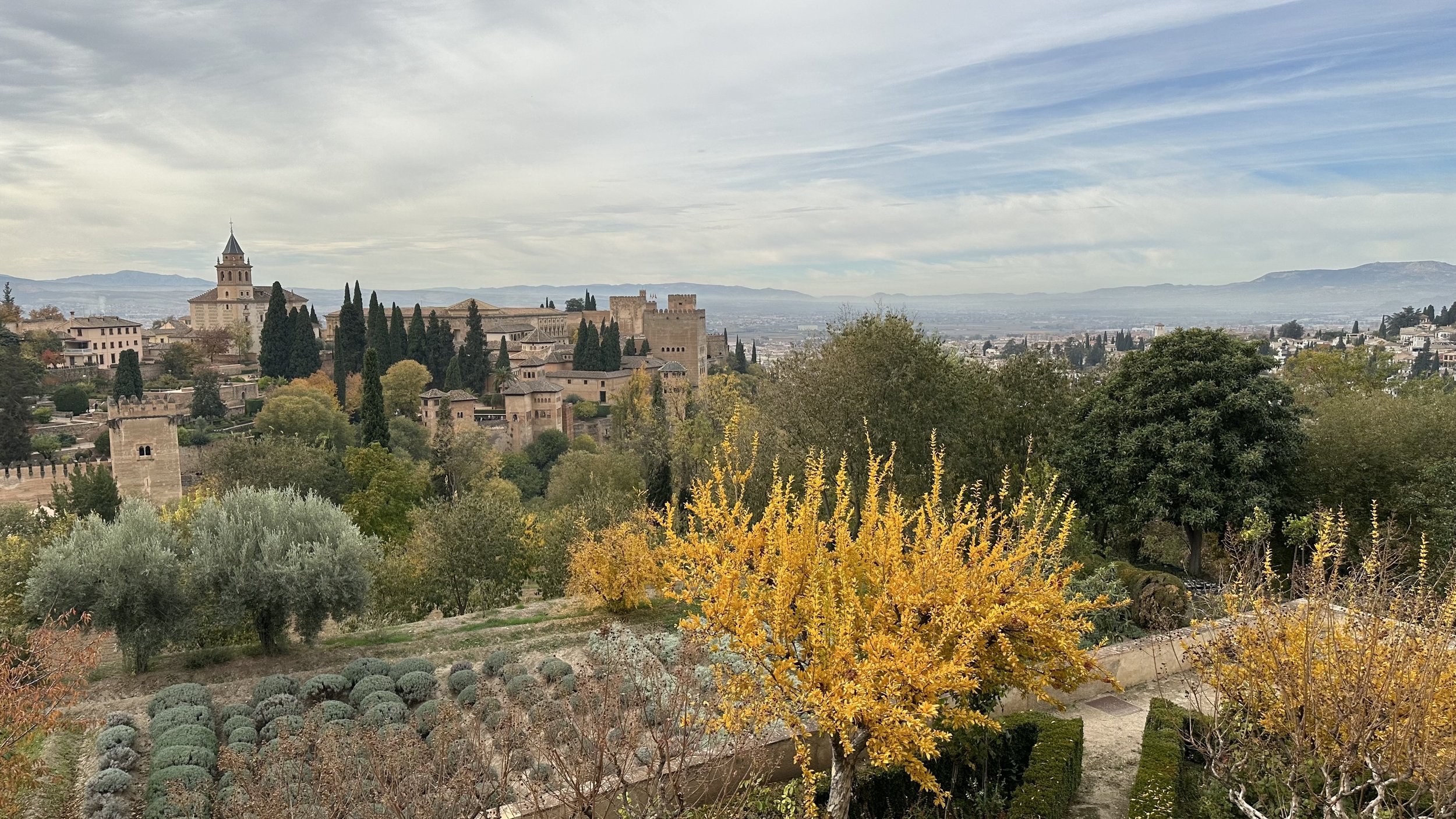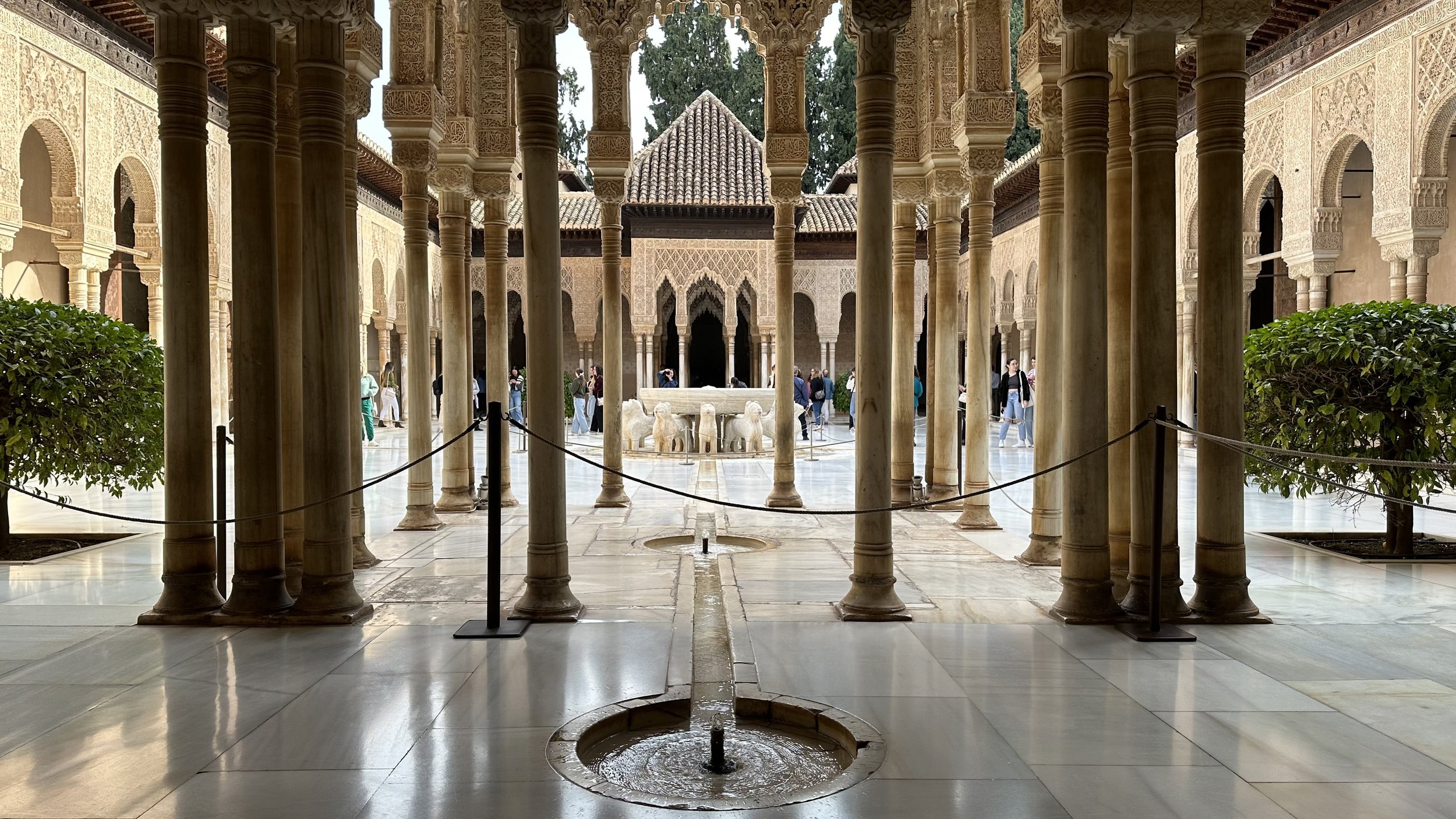With heads tilted and eyes half-closed.
Even from up there, ask me if I liked Granada and I will genuinely tell you that I did - lying to you. I’ll probably stop for a few seconds to remember what I saw – 3 weeks into this journey, I have to admit that my mind struggles to distinguish one place from another – before coming back to you with a smile and saying, “Oh yes, I loved it.” We stopped our engine in the embrace of the Sierra Nevada, and rested in the arms of a quaint mountain village near Granada, a mosaic of cultural splendour and utter, forgotten simplicity.
One minimarket, one bar and this.This humble hamlet boasted but a single minimarket and a bar—keepers of simplicity in a world often too complex. With only two restaurants that awoke from their slumber on weekends, we found ourselves adrift in a sea of tranquillity, untouched by the weekend bustle, dining under the stars as the restaurants remained in repose. Thus, we surrendered to the rhythm of Granada.
Our home so far from home, but it could be worse.The following morning we caught the local coach to the city and beautifully lost in translation, listening to old women discussing what I think was the price of vegetables. Or the upcoming wedding: I’m not entirely sure.
As we left the coach stop behind us, the Alhambra, a jewel of Andalusian heritage, stood before us, casting shadows of former empires and whispering tales of sultans and poets. We wandered through its corridors and gardens with our mouths agape, awestruck by the intricate tapestry of art and architecture, where every wall, every fountain, every arabesque seemed to hold a universe of stories, a labyrinth of beauty frozen in stone and water left behind by the Nasrid Dynasty in the last centuries of Muslim rule in Spain. The walls, ceilings, and floors are adorned with intricate geometric patterns hiding complex mathematical principles, such as symmetry, tessellation, and the concept of infinity in plain sight.
The Alhambra surrounded by autumn.The Golden Ratio in the Court of the Lions, the Muqarnas (a sort of “honeycomb vaulting”) shining in three-dimensional shapes, toys with a sense of depth and geometric complexity, rendering space as if it were moving due to the dynamics between light and shadow. Fabulous.
The windows to infinity.Pasts.Right to left; from the East to the West.Keeping an eye on Granada.Symmetry and harmony in the Court of Lions.As twilight draped over the city, we found ourselves in one of the famed Cuevas—cavernous abodes carved from the very mountains that cradle Granada. These natural alcoves, once the homes of the Neanderthals, now played host to vibrant expressions of culture. It was here we dined, the flavours of Andalusia dancing on our tongues before a tapestry of flamenco unfurled before our eyes.
The staccato of heels, the soulful cry of the guitar, the plaintive, improvised songs that tell of love and loss; all of it a fiery embodiment of Spanish passion. A cliché, I know, but this one is true, I assure you. Its Andalusian, Romani, Arabic, and Sephardic influences, blended by the sheer force of profound emotional intensity, complex rhythms, and a spontaneous interplay between cante (singing), toque (guitar playing), baile (dance), and jaleo (vocalisations and clapping), reflect the diverse social and cultural narratives of southern Spain.
Granada, up until that point, had captured our hearts as the crowning experience of our travels. The following day, its narrow, winding streets led us through the Albayzín—the Spanish quarter where the scent of jasmine lingers and balconies are adorned with the day’s laundry, fluttering like flags. Here, the Arabic influences are etched into every doorway, every whispered greeting, blending seamlessly with the tapestry of Spanish history. In this city, where the past breathes in harmony with the present, where every stone and street has been polished by the footsteps of history, we found a rare treasure—a moment in time, suspended like the Alhambra against the sky, forever etched in the memory of our minds.
Just a November afternoon in Granada.
The coach back to the village is engulfed in silence in the late afternoon, its vociferous ladies now blending vegetables and weddings somewhere in the small houses we see from the other side of the hill as we approach the last stretch of road. The few lights seem to tremble, but there is no wind and they aren’t candles. We are just tired: head on the bus window, eyes firmly on the view in front of us before it morphs into something we temporarily call “home”.









